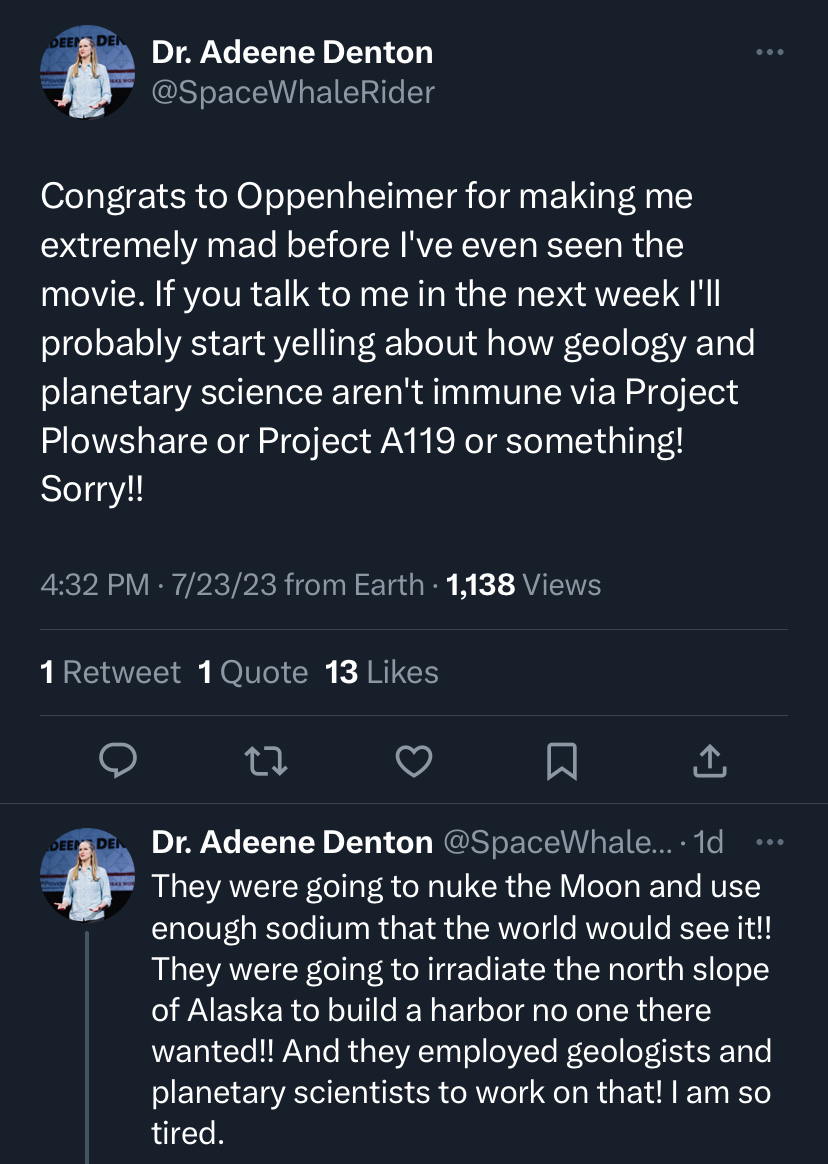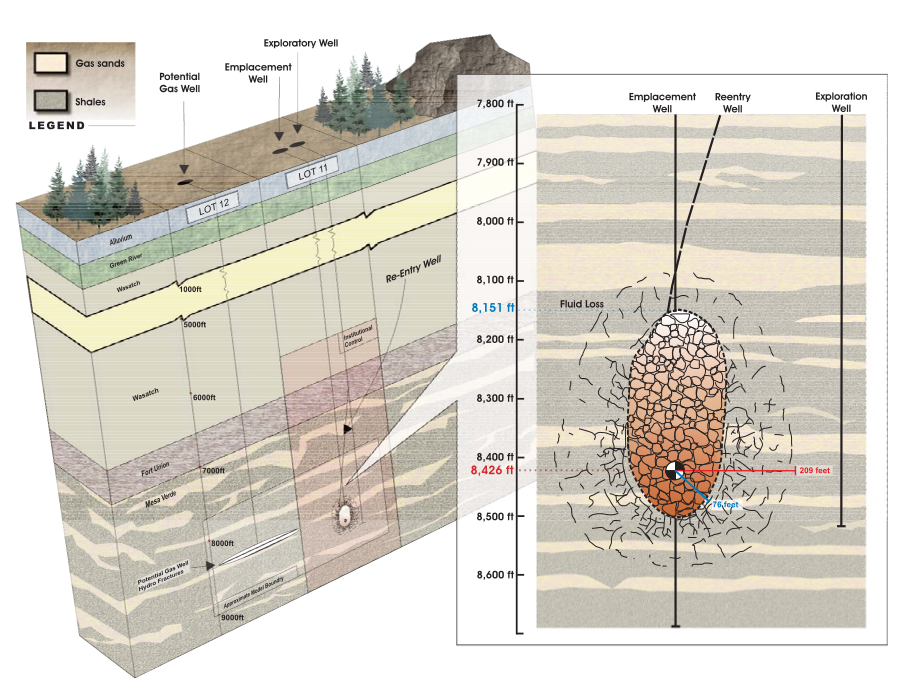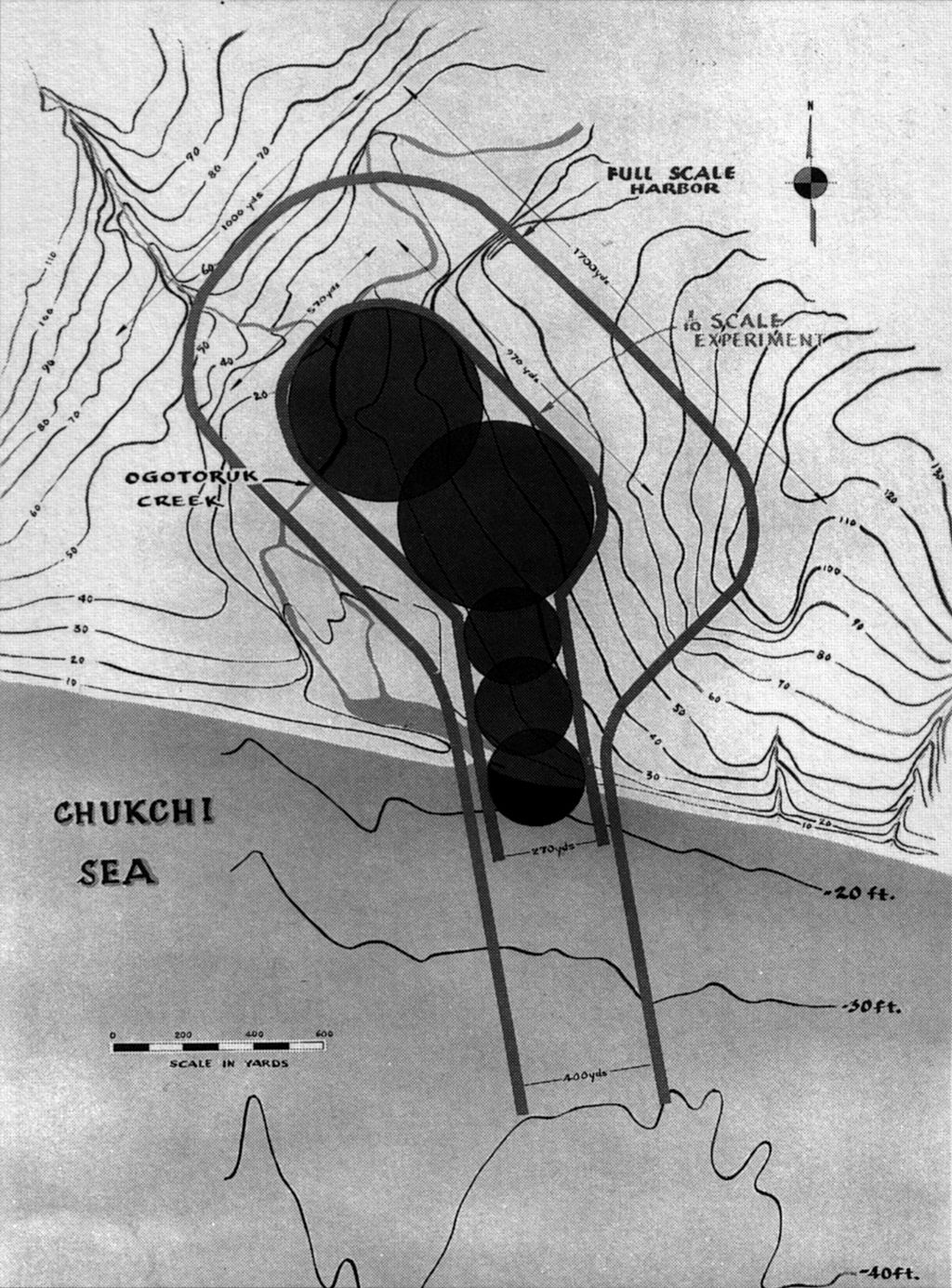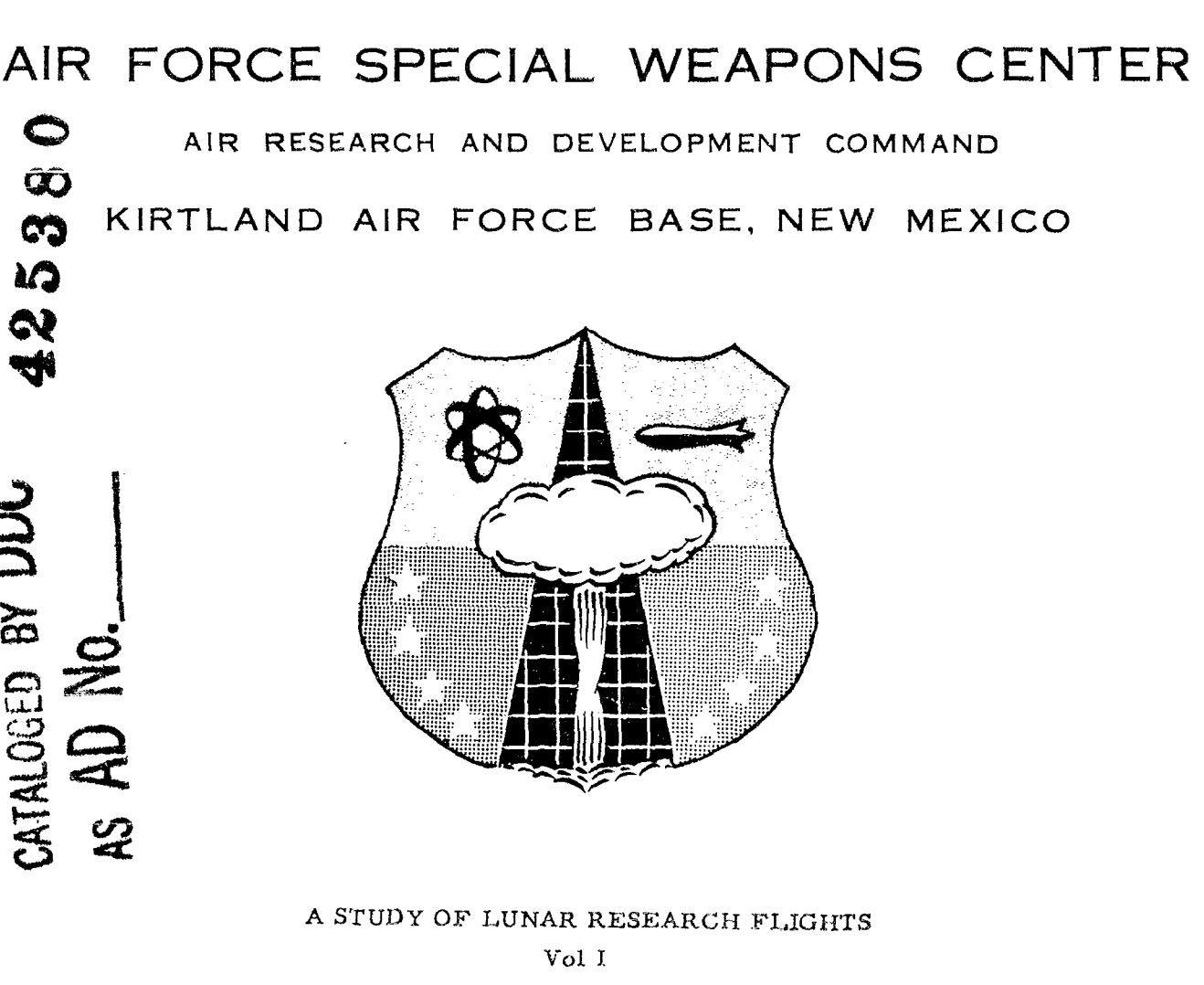
When I think of issues relating to ethics in planetary science, usually the discussion trends towards the risk of contamination with planetary exploration (i.e., planetary protection) or resource extraction (i.e., asteroid mining and space resources). While I was aware that much of what we know about impact crater formation and morphology was derived from the nuclear tests of the 1950's, I had never dug deeper into this particular intersection between planetary science and the US military-industrial complex. I was intrigued by the projects referenced in Dr. Denton's tweet, so I did a bit of reading into each of them. The common thread between them was the disturbingly cavalier use of nuclear weapons for various purposes outside of direct warfare, such as civilian and blatant space race nationalism, and let me tell you, what I found out is WILD. While nuclear annihilation is still a possible, although hopefully unlikely scenario in global geopolitics, both of these operations really speak to the point in time in which the threat was far more palpable than it is now.
Project Plowshare was a program created by the United States Atomic Energy Commission (now the Department of Energy) in 1958 to research the use and application of nuclear weapons for industrial purposes. This was divided into two general categories: using nuclear explosives to carve out large chunks of rock, and detonating nuclear explosives underground. The latter was chiefly trumpeted as a means to stimulate the flow of natural gas by fracturing rock, allowing the gas to flow freely. This is an almost perfect microcosm of America: using products of the military-industrial complex which, used in wartime to end the lives of hundreds of thousands of people will now be set towards the task of extracting more fossil fuels from the Earth, a process which will work steadily to render our planet uninhabitable.

One of the other key flagpoles of the Plowshare Program was called Project Chariot. This revolved around the use of several hydrogen bombs to create an artificial harbor in Point Hope, Alaska. An area the size of the US state of Delaware was cordoned off for the planned operation, and multiple environmental studies were enacted. In the course of this planning, word got out to the native populations of Point Hope that the US government was planning to nuke their home, and they didn't like the sound of that. Why was the US government planning to use nukes to create an artificial harbor in Alaska? That's a great question! And it's not one that the folks behind Project Chariot had much of an answer to, as there was determined to be little potential economic use for the harbor in question.

Where things *really* get interesting is Project A119, also known as "A Study of Lunar Research Flights, Vol. 1" in the official report. I'll make it short and to-the-point: in the 1950's, the US wanted to nuke the Moon. After being humiliated by the Soviet Union's early lead in the Space Race with the successful launch of Sputnik-1, the first artificial Earth satellite, the US Air Force was wracking their collective brains trying to figure out how to get the upper hand. Naturally, the first thing they thought of was detonating a hydrogen bomb on the surface of the Moon. I skimmed through the 190+ page report, and it is a doozy. Right from the start, it lays clear the multifaceted intentions of this experiment: the motivation for nuking the Moon is "clearly threefold: scientific, military, and political." Of course, if this report were more honest, "military" and "political" would both be in size 72 comic sans while "scientific" would be in 0.5 size subscript font. The scientific necessity of nuking the Moon is given by pointing out that we could use high speed spectroscopy to determine the composition of lunar materials (surely there must be a way besides nuking the Moon to do this?), as well as determining the thermal conductivity of the lunar surface (again--there has to be some other way!)


One of the more interesting sections is in Chapter VIII, "Organic Matter and the Moon," where the report's author discusses the survival time of a population of organisms when becoming irradiated, presumably by the hydrogen bomb the US Air Force is detonating on the Moon. For science. Obviously, there are many aspects of this report that are dated, chiefly the idea that there may be some kind of life endemic to the lunar environment. I don't have much else to add. It's a pretty wild report, so read it if you get the chance and have the time. Oh, and I almost forgot to add-- two of the planetary scientists who assisted in Project A119 at some stage were Gerard Kuiper and Carl Sagan. In fact, the existence of Project A119 only became known once Sagan disclosed it during a job interview. For real. Moral of the story? If you're a planetary scientist and a US government official asks for your assistance in nuking the Moon, or any other planetary body for the matter, just say no. So for any lunar geology folks reading this, what scientific benefits would you gain from nuking the Moon? Sound off in the comments below.